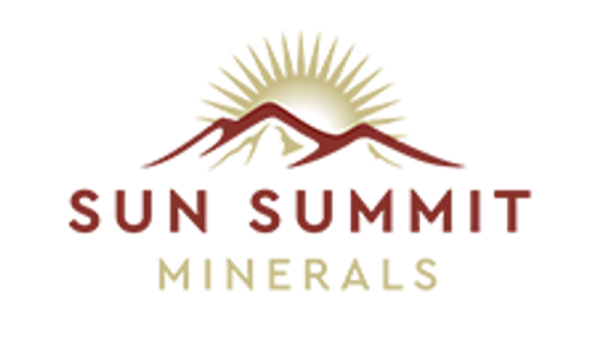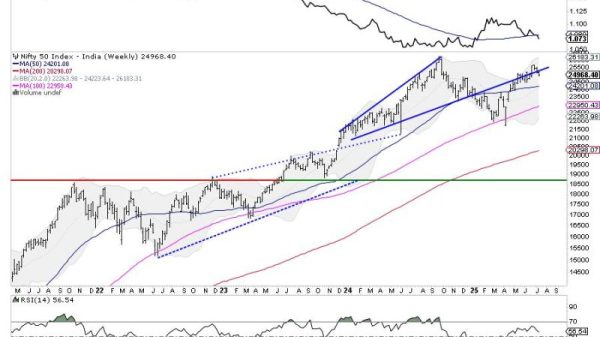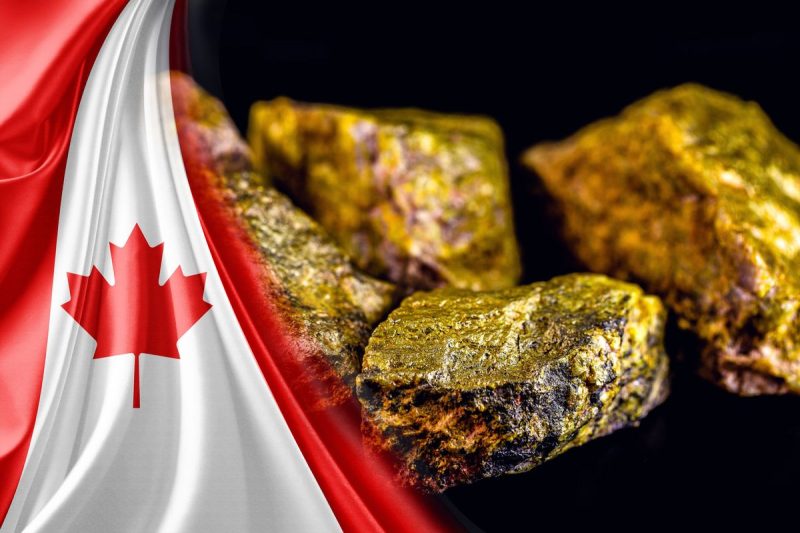The uranium market stumbled into Q2 2025, after spot prices dipped to an 18 month low of US$63.50 per pound in March amid abundant secondary supply and cautious utility contracting.
By June, however, prices had rebounded into the US$70 range on renewed US policy support and heightened geopolitical tensions. While the spot market remains volatile, long-term prices have held steady at US$80 level.
Yet utility demand still lags. Just 25 million pounds were contracted by mid-year, putting 2025 on track to fall well short of the 160 million pounds booked in 2023.
“It’s a pressure cooker,” said Oceanwall’s Ben Finegold, pointing to a widening disconnect between term prices and utility participation. With global supply still covering only 80 to 90 percent of annual reactor needs and inventories thinning, market watchers warn a sharp contracting surge is inevitable.
Compounding the urgency are ambitious global buildout plans, including 69 reactors under construction and a US proposal to quadruple nuclear capacity by 2050.
As the supply-demand gap grows, uranium investors are watching closely for a return of utility buying and a possible inflection point for the sector.
Amid this opaque landscape, several Canadian uranium companies registered significant gains so far in 2025. Below are the best-performing Canadian uranium stocks by share price performance. All data was obtained on July 30, 2025, using TradingView’s stock screener. Companies on the TSX, TSXV and CSE with market caps above C$10 million at the time were considered.
Read on to learn about the top Canadian uranium stocks in 2025, including what factors have been moving their share prices.
1. Purepoint Uranium (TSXV:PTU)
Year-to-date gain: 109 percent
Market cap: C$31.69 million
Share price: C$0.46
Exploration company Purepoint Uranium has an extensive uranium portfolio including six joint ventures and five wholly owned projects, all located in Canada’s Athabasca Basin.
In a January statement, Purepoint announced it had strengthened its relationship with IsoEnergy (TSX:ISO) when the latter exercised its put option under the framework of a previously announced joint-venture agreement, transferring 10 percent of its stake to Purepoint in exchange for 4 million shares.
The now 50/50 joint venture will explore 10 uranium projects across 98,000 hectares in Saskatchewan’s Eastern Athabasca Basin, including the Dorado project.
Purepoint shares jumped from C$0.265 on July 7 to C$0.465 on July 9 after the release of initial drill results from Dorado. According to the July 8 statement, drilling at the Q48 target “confirm(ed) the zone as a significant uranium-bearing structure.”
Continuing to trend higher, shares reached a year-to-date high of C$0.52 on July 23. The move coincided with an additional drill result release from the discovery, now dubbed the Nova Discovery target area.
“PG25-07A has successfully extended the Nova Discovery zone by 70 metres and delivered our strongest intercept to date, both in intensity and thickness based on radioactivity,’ Purepoint President and CEO Chris Frostad said.
2. District Metals (TSXV:DMX)
Year-to-date gains: 104.9 percent
Market cap: C$139.38 million
Share price: C$0.83
District Metals is an energy metals and polymetallic exploration and development company with a portfolio of seven assets in Sweden, including four uranium projects: Viken, Ardnasvarre, Sågtjärn and Nianfors. Currently, District is focused on its Viken uranium-vanadium project, which the company says hosts the world’s largest undeveloped uranium deposit.
The company’s share price began trending upwards in mid-May following news of a fully subscribed C$6 million private placement.
Some noteworthy announcements since then include the completion of a helicopter-borne mobile magnetotellurics survey at the Viken property in late June, with results expected later in Q3.
Also in June, the company commended Sweden’s Ministry of Climate and Enterprise for submitting a proposal to lift the country’s longstanding ban on uranium mining. The referral recommends allowing uranium extraction under the Minerals Act and permitting exploration and processing applications under set conditions.
Shares of District Metals rose to a year-to-date high of C$1.01 on July 24, two days after the announcement of a high-resolution drone-based radiometric and magnetic survey across its Ardnasvarre, Sågtjärn and Nianfors projects, which are largely covered by thin glacial overburden and have never been subject to detailed geophysical surveying.
According to the company, the drone will fly low and with tight line spacing, allowing detection of subtle anomalies that traditional surveys may have missed.
3. Energy Fuels (TSX:EFR)
Year-to-date gain: 70.21 percent
Market cap: C$2.83 billion
Share price: C$12.80
US-based uranium producer Energy Fuels has a large portfolio of conventional and in-situ recovery (ISR) projects across the Western United States, including Pinyon Plain in Arizona, a top national producer.
Additionally, Energy Fuels owns and operates the White Mesa mill, the only fully licensed and operating conventional uranium mill in the US. The company is progressing heavy rare earth oxide processing at the plant as well.
In line with US efforts to bolster domestic uranium output, Energy Fuels has been ramping up Pinyon Plain. In May, a record of approximately 260,000 pounds of U3O8 was mined at the site, up 71 percent over the prior month.
A subsequent press release tallied Q2 2025 output from Pinyon Plain at 638,700 pounds of uranium, which it said exceeded estimates due to the high uranium grades, which averaged 2.23 percent in Q2 and 3.51 percent in June.
Company shares reached a year-to-date high of C$13.80 on July 27. The stock bump followed the successful commencement of pilot scale heavy rare earth production at its White Mesa mill on July 17.
4. Stallion Uranium (TSXV:STUD)
Year-to-date gain: 56.67 percent
Market cap: C$10.72 million
Share price: C$0.23
Uranium junior Stallion Uranium holds a 2,870 square kilometer land package on the western side of Saskatchewan’s Athabasca Basin, including a joint venture with Atha Energy (TSXV:SASK,OTCQB:SASKF) for the largest contiguous project in the region. The company’s primary focus is the Coyote target at the project.
Stallion’s share price shot upwards on July 8 after it announced a technology data acquisition agreement for Matchstick TI, an intelligent geological target identification platform with 77 percent accuracy. Stallion plans to use the technology to enhance its exploration efforts.
On July 14, the company reported the results of a 3D inversion of ground gravity data over the Coyote target, part of its joint venture with Atha Energy.
‘The inversion modelling at Coyote has delineated a laterally extensive and coherent gravity low, spatially coincident with a structurally complex corridor exhibiting attributes characteristic of fertile uranium-bearing systems within the Athabasca Basin,” Stallion Uranium CEO Matthew Schwab said.
Three days later, the company announced it settled its outstanding debt with Atha Energy, issuing 802,809 common shares at a deemed price of C$0.135 per share.
Stallion’s shares registered a year-to-date high of C$0.25 on July 18.
Stallion released results from an electromagnetic survey on July 21 that further refined the Coyote target area.
5. Cameco (TSX:CCO)
Year-to-date gain: 45.96 percent
Market cap: C$47.21 billion
Share price: C$108.10
Sector major Cameco is a leading global uranium producer headquartered in Saskatoon, Saskatchewan. The company supplies uranium fuel for nuclear energy generation and holds significant assets across the nuclear fuel cycle, including 49 percent interests in Westinghouse Electric Company (NYSE:BBU) and Global Laser Enrichment.
In the Athabasca Basin, Cameco’s portfolio includes a majority interest in the Cigar Lake mine, the world’s top-producing uranium mine. The company also fully owns the McArthur River mine, another major high-grade deposit in the same region. Additionally, Cameco operates the Key Lake mill, which processes ore from both Cigar Lake and McArthur River.
Globally, Cameco owns the Crow Butte ISR operation in Nebraska and the Smith Ranch-Highland ISR operation in Wyoming. Both are currently in care and maintenance. In Kazakhstan, Cameco holds a 40 percent interest in the Inkai joint venture, a producing ISR uranium operation developed in partnership with state-owned Kazatomprom.
On June 6, Cameco announced an expected US$170 million increase in its 49 percent equity share of Westinghouse Electric Company’s adjusted earnings before interest, taxes, depreciation, and amortisation (EBITDA) for Q2 and full year 2025. The projected gain is linked to Westinghouse’s involvement in building two nuclear reactors at the Dukovany power plant in the Czech Republic.
In its Q2 2025 results, released July 31, the company reported net earnings of C$321 million, adjusted net earnings of C$308 million and adjusted EBITDA of C$673 million — all significantly higher year-over-year in part because of the aforementioned share of Westinghouse’s EBITDA.
In its uranium segment, Cameco’s production totaled 4.6 million pounds, down from 7.1 million pounds in Q2 2024, due to planned maintenance at the Key Lake mill. However, its adjusted EBITDA for the segment increased by 43 percent year-over-year to C$352 million.
Cameco’s share price reached a year-to-date high of C$109.10 on July 25.
FAQs for investing in uranium
What is uranium used for?
Uranium is primarily used for the production of nuclear energy, a form of clean energy created in nuclear power plants. In fact, 99 percent of uranium is used for this purpose. As of 2022, there were 439 active nuclear reactors, as per the International Atomic Energy Agency. Last year, 8 percent of US power came from nuclear energy.
The commodity is also used in the defense industry as a component of nuclear weaponry, among other uses. However, there are safeguards in effect to keep this to a minimum. To create weapons-grade uranium, the material has to be enriched significantly — above 90 percent — to the point that to achieve just 5.6 kilograms of weapons-grade uranium, it would require 1 metric ton of uranium pre-enrichment.
Because of this necessity, uranium enrichment facilities are closely monitored under international agreements. Uranium used for nuclear power production only needs to be enriched to 5 percent; nuclear enrichment facilities need special licenses to enrich above that point for uses such as research at 20 percent enrichment.
The metal is also used in the medical field for applications such as transmission electron microscopy. Before uranium was discovered to be radioactive, it was used to impart a yellow color to ceramic glazes and glass.
Where is uranium found?
The country with the greatest uranium reserves by far is Australia — the island nation holds 28 percent of the world’s uranium reserves. Rounding out the top three are Kazakhstan with 15 percent and Canada with 9 percent.
Although Australia has the highest reserves, it holds uranium as a low priority and is only fourth overall for production. All its uranium output is exported, with none used for domestic nuclear energy production.
Kazakhstan is the world’s largest producer of the metal, with production of 21,227 metric tons in 2022. The country’s national uranium company, Kazatomprom, is the world’s largest producer.
Canada’s uranium reserves are found primarily in its Athabasca Basin, and the region is a top producer of the metal as well.
Why should I buy uranium stocks?
Investors should always do their own due diligence when looking at any commodity so that they can decide whether it fits into their investment plans. With that being said, many experts are convinced that uranium has entered into a significant bull market, meaning that uranium stocks could be a good buy.
A slew of factors have led to this bull market. While the uranium industry spent the last decade or so in a downturn following the 2011 Fukushima nuclear disaster, discourse has been building around the metal’s use as a source of clean energy, which is important for countries looking to reach climate goals. Nations are now prioritizing a mix of clean energies such as solar and wind energy alongside nuclear. Significantly, in August 2022, Japan announced it is looking into restarting its idled nuclear power plants and commissioning new ones.
Uranium prices are very important to uranium miners, as in recent years levels have not been high enough for production to be economic. However, in 2024, prices spiked from the US$58 in August 2023 to a high of US$106 per pound U3O8 in February 2024. They have since consolidated at around US$70, meaning this could be a buying point for those looking to get into the sector.
Securities Disclosure: I, Georgia Williams, hold no direct investment interest in any company mentioned in this article.


































